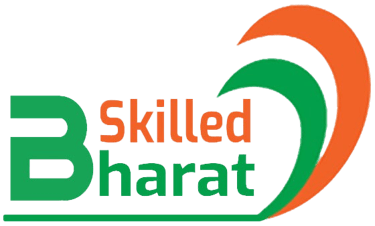Documentation Control and Management
The Critical Role of Documentation Control and Management in Project Management
5/1/20254 min read


Effective project management relies on seamless communication, precise planning, and disciplined execution. Central to these processes is documentation control and management—a practice that ensures projects remain organized, compliant, and successful. This blog explores the importance of documentation control, its impact on project outcomes, and key considerations like software tools, training, career opportunities, and future prospects.
What is Documentation Control and Management?
Documentation control and management involve the systematic creation, organization, storage, retrieval, and updating of project-related documents. These include project plans, schedules, budgets, risk registers, stakeholder communications, and compliance records. The objective is to ensure accurate, accessible, and secure information is available to the right people at the right time.
Why Documentation Control Matters in Project Management
1. Enhances Clarity and Accountability
Well-managed documentation acts as a single source of truth, clarifying roles, responsibilities, and project objectives. Team members can refer to plans or agreements to stay aligned, reducing errors and fostering accountability.
2. Supports Effective Communication
Projects involve diverse stakeholders—team members, clients, vendors, and regulators. Documentation, such as meeting minutes or change logs, ensures clear communication of expectations, progress, and updates, minimizing miscommunication risks.
3. Facilitates Risk Management
Risks like scope creep or resource shortages are inevitable. A robust documentation system tracks risks, mitigation plans, and contingencies through tools like risk registers, enabling proactive issue resolution.
4. Ensures Compliance and Auditability
In regulated industries like construction, healthcare, or finance, compliance is critical. Proper documentation control ensures records are accurate and audit-ready, protecting organizations from legal or financial penalties.
5. Preserves Knowledge for Future Projects
Documentation captures lessons learned and best practices, creating a knowledge base for future projects. This institutional memory helps teams avoid past mistakes and replicate successes.
Software Tools for Documentation Control
Modern project management relies on software to streamline documentation processes. Popular tools include:
Microsoft SharePoint: Offers centralized document storage, version control, and access management.
Google Workspace: Provides cloud-based collaboration tools like Google Docs and Sheets for real-time editing and sharing.
Asana: Integrates task management with document storage, ideal for tracking project deliverables.
Jira: Supports agile project management with robust documentation for issue tracking and workflows.
Confluence: A wiki-style platform for creating and organizing project documentation.
DocuSign: Ensures secure e-signatures for contracts and approvals.
Notion: A versatile tool for creating project wikis, databases, and collaborative documents.
These tools automate workflows, enhance collaboration, and ensure document security, making them indispensable for effective documentation control.
Training for Documentation Control
To excel in documentation control, project managers and team members need targeted training. Key areas include:
Tool Proficiency: Training on software like SharePoint, Jira, or Confluence to leverage their full capabilities.
Version Control Practices: Understanding how to track changes and maintain document integrity using tools like Git or built-in version control features.
Compliance Standards: Learning industry-specific regulations (e.g., ISO 9001, GDPR) to ensure documentation meets legal requirements.
Effective Communication: Developing skills to create clear, concise, and actionable documents.
Data Security: Training on access controls, encryption, and secure storage to protect sensitive information.
Training can be accessed through online platforms like Coursera, Udemy, or LinkedIn Learning, as well as certifications like PMP (Project Management Professional) or CAPM (Certified Associate in Project Management), which cover documentation practices.
Career Opportunities in Documentation Control
Documentation control is a specialized skill set with growing demand across industries. Career paths include:
Document Control Specialist: Manages document workflows, ensures compliance, and maintains records.
Project Coordinator: Supports project managers by organizing documentation and tracking deliverables.
Project Manager: Oversees projects, with documentation control as a core responsibility.
Compliance Officer: Ensures documentation aligns with regulatory standards.
Knowledge Manager: Focuses on capturing and organizing institutional knowledge.
These roles are prevalent in industries like construction, IT, healthcare, and engineering. Salaries vary by region and experience, with document control specialists earning $50,000–$80,000 annually in the U.S., while project managers can earn $90,000–$150,000 or more.
Prospects for Documentation Control Professionals
The future of documentation control is bright, driven by:
Digital Transformation: Organizations are adopting cloud-based tools and AI-driven document management systems, increasing demand for tech-savvy professionals.
Regulatory Complexity: Stricter compliance requirements in industries like healthcare and finance necessitate robust documentation practices.
Remote Work: Distributed teams rely on centralized, accessible documentation, elevating the role of control specialists.
AI and Automation: Emerging technologies can automate routine tasks like document categorization, allowing professionals to focus on strategic oversight.
Professionals who stay updated on tools, regulations, and trends will find ample opportunities to advance in this field.
Best Practices for Documentation Control
To maximize effectiveness, adopt these practices:
Standardize Processes: Use templates for documents like project charters or status reports to ensure consistency.
Implement Version Control: Track changes to avoid confusion over outdated versions.
Centralized Storage: Use secure, cloud-based platforms with access controls.
Automate Workflows: Leverage software to streamline updates, approvals, and notifications.
Regularly Review Documents: Schedule audits to keep records accurate and relevant.
The Consequences of Poor Documentation Control
Neglecting documentation control can lead to:
Misaligned Teams: Outdated or conflicting information causes delays and errors.
Cost Overruns: Untracked changes or scope creep inflate budgets.
Compliance Risks: Incomplete records lead to regulatory violations.
Knowledge Loss: Valuable insights are lost without proper documentation.
Conclusion
Documentation control and management are the backbone of successful project management. By leveraging software tools, investing in training, and fostering a culture of disciplined documentation, organizations can achieve clarity, compliance, and efficiency. For professionals, mastering this skill opens doors to rewarding careers with strong future prospects. Embrace documentation control as a strategic asset, and watch your projects—and career—thrive.
